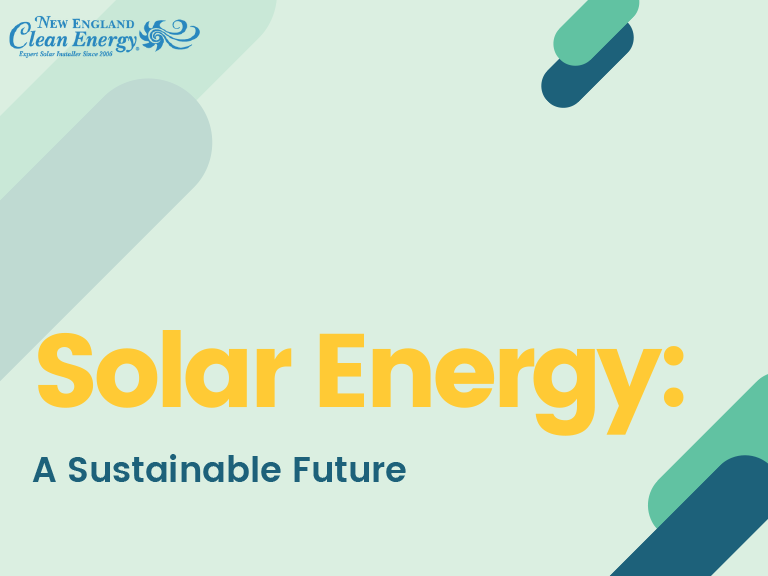The Future of Solar Technology
The Future of Solar Power and Storage: A Glimpse into the Next Decade
Like all technologies, solar technology continues to change and evolve. While these emerging changes may improve efficiency, todays residential systems have a payback period of 6 to 8 years and commercial projects can be even faster! Technology will change, enabling us to de-carbonize more than we can today, but that’s no reason to not decarbonize what we can today!
Existing solar and solar storage technology creates a platform to fight against climate change today, saves you money, and helps drive the technology forward. If you install solar today it’ll work for 25 plus years into the future. In short, there’s a lot of great things to come that will allow us to decarbonize more of our economy in the future and allow for even more decarbonization over time.
As we look towards the future, the landscape of solar power and energy storage is poised for remarkable transformations. For the average homeowner, these changes promise not only to make solar energy more accessible but also to enhance its efficiency and integration into our daily lives.
There is tremendous value in solar energy now and we expect that value to grow. Over the next 5-10 years, we can anticipate significant advancements in solar panels and batteries, driven by new materials, innovative technologies, and evolving techniques. Let’s explore what these future trends might look like and how they could impact the average homeowner.
Solar Panels: Thinner, More Efficient, and More Versatile
One of the most exciting developments is the use of new materials such as perovskite. Perovskite solar cells have shown potential for higher efficiency rates compared to traditional silicon-based cells. They are cheaper to produce and have the ability to be applied to surfaces in a thin, flexible layer, opening up new avenues for integrating solar power into everyday objects, from windows to vehicles.
Another promising area is the advancement of bifacial solar panels. These panels can capture sunlight from both sides, significantly increasing their energy generation capacity. As these technologies mature, homeowners can expect solar panels that are not only more powerful but also more aesthetically pleasing and adaptable to different surfaces and settings.
Batteries: The Graphene Revolution and Beyond
The next decade is set to revolutionize how we store solar energy, making it more efficient and longer-lasting. Graphene, a form of carbon that is one atom thick, is at the forefront of this revolution. Batteries incorporating graphene are touted for their rapid charging capabilities, potentially reducing charging times to a fraction of what is currently possible. Moreover, graphene batteries could offer higher energy densities, meaning they can store more power in a smaller space, and have a longer lifespan than lithium-ion batteries.
In addition to graphene, research into solid-state batteries is gaining momentum. These batteries replace the liquid or gel-form electrolyte with a solid, significantly improving safety by reducing the risk of leaks or fires. Solid-state batteries also promise higher energy densities and longer lifespans, making them an attractive option for future solar energy storage solutions.

Have Questions about How You Can Make Solar Work For You?
New England Clean Energy is all about making it easy for you to get started and we offer two ways to find out how solar can work for your home or business!
Use our AI-driven estimation tool to get an instant ballpark estimate and see savings with our self-assessment solar cost tool.
Speak with an expert solar consultant to get a free evaluation, with a complete and detailed proposal.
A Balanced Approach:
Rather than holding out indefinitely for technological advancements, a more balanced approach is to assess the current needs and potential benefits. If a solar panel system installed today meets your energy requirements and promises tangible savings, it’s likely to be worth taking the plunge now rather than waiting. Remember, the goal of solar energy isn’t just efficiency but also sustainability. Every year with solar is a year contributing to a greener planet.
New Storage Technologies: Beyond Batteries
Looking beyond traditional battery storage, the future holds exciting possibilities for alternative energy storage solutions. One such innovation is the development of solar thermal storage, which captures heat generated by solar panels. This heat can be stored and converted back into electricity when needed, offering a new way to manage the intermittency of solar power.
Another area of interest is the integration of solar energy with hydrogen fuel cells. Excess solar power can be used to electrolyze water, producing hydrogen that can be stored and used to generate electricity through fuel cells. This not only provides a method for long-term energy storage but also opens up possibilities for using solar power in transportation and other sectors.
What This Means for Homeowners
For homeowners, these advancements spell a future where solar energy becomes even more efficient, affordable, and versatile. The integration of solar power into various aspects of our homes and lives will grow in a seamless way, with solar panels that blend into our environments and batteries that offer robust and reliable energy storage. The potential for increased self-sufficiency and further reduction in energy costs makes the future of solar power and storage an exciting prospect.

Solar Energy: A Sustainable Future
In this e-book, we will explore the significant advantages of solar energy, demonstrate how it contributes to sustainability, and share inspiring case studies of successful solar installations. You will hear testimonials from satisfied customers and gain insights from industry experts who are leading the charge towards a greener planet. Join us as we delve into the transformative potential of solar energy and its pivotal role in building a sustainable future for generations to come.

